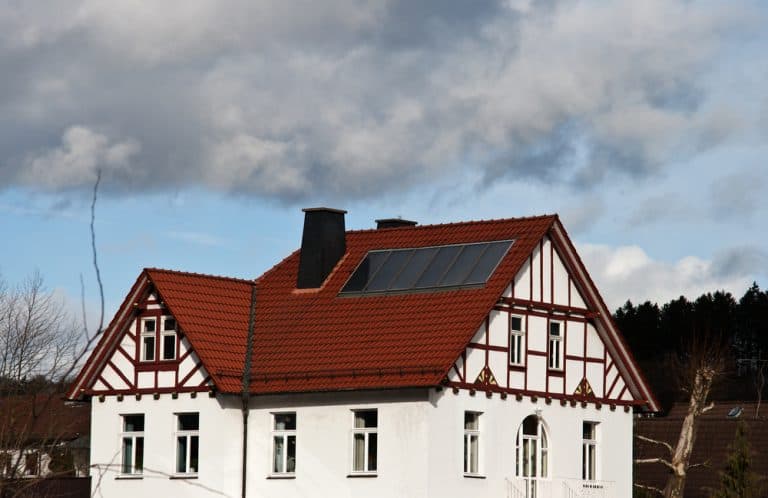Residential Solar: Difference Between Batteries and Generators

When the grid goes down, generators aren’t always the best way to back up a home’s power supply.
Generators have been the go-to for large companies and emergency preparedness gurus for quite some time. This is because generators have an initial low cost.
This, however, is where the draw for generators stops. Let’s take a look at how generators and batteries work and what sets them apart from each other.
How Generators Work
A generator transfers mechanical energy, movement of parts, to electrical energy (movement of electrons). This is done with the help of fossil fuels, a turbine of sorts, a conductor and some magnets.
The burning fossil fuel produces pressure which turns a turbine. This turning turbine spins a conductor, such as copper, inside a magnetic field. Once the copper in the magnetic field starts to turn, this mechanical energy generates an electric current. This process is called electromagnetic induction.
This current will power a home and the devices in it. If, however, the generator runs out of fuel, it will stop generating electricity.
Understanding Coal-Fired Generators
Coal-fired generators are typically used by large utility companies. This is because coal is a cheaper fuel source.
Once the coal starts to burn it boils water above it which creates steam. The steam is then pressurized so it will push a turbine and start the process of creating electricity. When coal is burnt, however, dangerous metals and toxins get released into the air.
The Gist of Diesel Generators
Diesel generators use pressure to get the fuel to combust. A diesel generator only compresses the air which allows it to use less fuel to push the turbine. However, the fuel doesn’t burn clean, therefore, the generator will require some regular cleaning and the air quality will diminish during use.
Natural Gas and Gasoline Generators
Gasoline generators mix the gas and air together in a carburetor. It is then pressurized so it can move the turbine.
Natural Gas Generators are more gaseous then gasoline or diesel. This means that the gas and air need to be pressurized just right in a carburetor and injected to move the turbine.
Looking at Propane Generators
Propane generators require more fuel to run. However, they burn cleaner which makes them better for the generator.
If you are looking for a fuel that is good for the environment this one is less harmful. However, it isn’t as clean or maintenance-free as battery backup.
Powering a Home With Solar and Battery Backup
Many have turned to fossil-fuel-powered generators because they are cheap and do the job. However, these aren’t the only factors that should be considered when determining backup power for a solar-powered home.
In our day in age, power not only needs to be readily available but easy to access. The sun, unlike fossil fuels, is easy to come by at no extra cost. The problem is that solar arrays on their own do not store excess power.
Using a generator when the sun is down can help alleviate this, but generators need fuel at all times in order to run. This means it will cost extra money to use a generator.
A battery, however, only needs fuel to recharge it. Once the battery is charged it is good to go until the charge has been drained from it.
This is why battery backup coincides with solar so well. Together they are able to produce electricity for on-demand use.
How a Battery Works
Unlike a generator, a battery doesn’t need a fuel source to produce an electrical current. Instead, a battery has a surplus of electrons that flow from one end of the battery back to the other.
a positive end(cathode) and a negative end (anode) of the battery hold electrons. While the electrolyte in the middle of the battery blocks the electrons from moving within the battery, helping it to keep its charge. Once the battery is connected to an electrical circuit it can then be used to power objects.
When all the electrons in the anode move to the cathode the battery needs to be recharged. One way to charge batteries is with solar panels. The electric current from the solar panels reverses the movement of electrons which charges the battery.

How Lead-acid Batteries Work
Lead-acid batteries get their name because they use a lead alloy as the conductive material on the ends of the battery. These rechargeable batteries are one of the most commonly used rechargeable batteries. This is because they are cheap and easy to come by.
There are, however, a couple of problems with lead-acid batteries. First, they take a long time to charge. Second, they have short discharge/charge cycles. These obstacles make these batteries a less viable option for backing up solar-generated electricity.
What Makes Lithium-ion Batteries Different
Lithium-ion batteries use lithium as the electrolyte between the cathode and the diode. The cathode has lithium metal oxide on it. While the diode has some form of carbon.
These components used together create longer discharge/charge cycles. It also has shorter charging times and is maintenance-free. Making it the ideal choice of battery for solar.
Which is Better With Solar: Generator Vs. Battery
When it comes down to it a battery is by far the superior option for a solar-powered home. This is because it doesn’t need extra fuel for it to work.
Instead, it stores the excess energy that the solar panels produce to charge the battery. The battery can then help decrease energy pulled off the grid when the sun is down.
There are several levels of battery backup available. Which one is best, however, depends on your home’s energy needs.
If being completely off the grid is important to you, using multiple home batteries in conjunction with a solar array can make this dream a reality.



Send a Message
Oops! We could not locate your form.